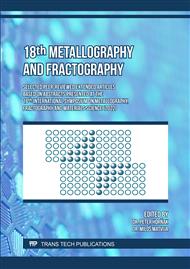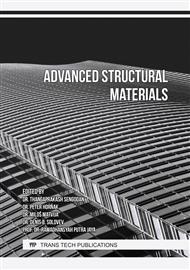p.101
p.109
p.117
p.125
p.131
p.137
p.143
p.149
p.155
Optimization of the Manufacturing Process of Sintered Fe-Mn-Cr-Mo-C Steels Using ANOVA
Abstract:
The subject of the research was to optimize the manufacturing process and heat treatment of sintered Fe-Mn-Cr-Mo-C steels in order to improve the strength properties. It can be concluded that the performed chemical composition, sintering temperature and the heat treatment have the greatest impact on the value of these properties. The sintering atmosphere has the smallest effect on the obtained properties. Increasing the sintering temperature, as well as carrying out additional heat treatment after the sintering process, increases the value of all of the analyzed properties. The optimization of the manufacturing process of the tested materials was carried out for each analyzed strength parameter separately and for all strength parameters together. The aim of the optimization was to determine the setting of the sintering process parameter levels that would allow to obtain the maximum values of the analyzed mechanical properties.
Info:
Periodical:
Pages:
131-136
Citation:
Online since:
March 2023
Authors:
Price:
Сopyright:
© 2023 Trans Tech Publications Ltd. All Rights Reserved
Share:
Citation:



